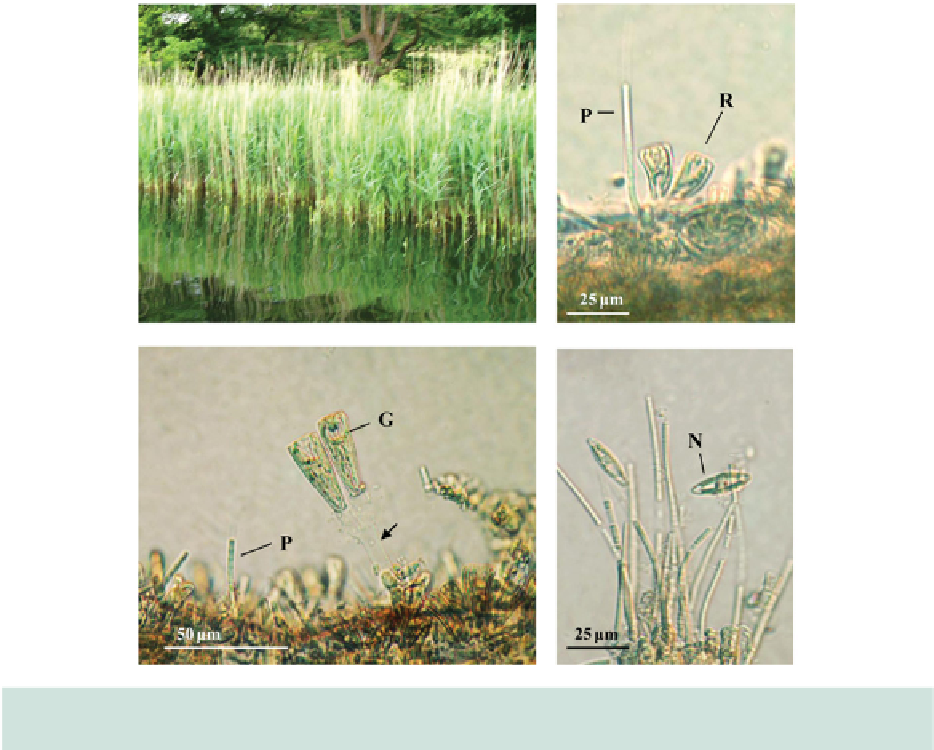Environmental Engineering Reference
In-Depth Information
Figure 2.29
Epiphytic algae on lake macrophytes. Top left: Dense reed beds (
Phragmites
) at edge of a eutrophic lake
(Rostherne Mere, UK). Samples of epiphytic algae obtained by scraping the surfaces of submerged stems are shown.
Top right: Sessile diatom
Rhoicosphenia
(R) with filament of the blue-green alga
Phormidium
(P). Bottom left: Mixed
periphyton community, including the stalked (arrow) diatom
Gomphonema
(G) and
Phormidium
(P). Bottom right: Dense
tuft of
Phormidium
, with unattached diatoms, possibly
Navicula
(N).
Removal of epiphytic algae
Epiphytic algae
that occur attached to other algae (Fig. 2.28) can nor-
mally be examined and identified
in situ
. In contrast,
the study of algae attached to higher plants requires
their removal from the host surface by mechanical or
manual procedures.
In the study of Sheldon and Boylen (1975),
algal epiphytes were removed from the
Potamoge-
ton
leaves by swirling in lake water, followed by
rinsing the leaf surface with a water spray. Micro-
scopic examination showed that
common throughout the littoral zone of the lake.
Leaves of
Potamogeton
(fourth to sixth position on
the plant stem) were collected by divers at depths of
3 m and then carefully stored underwater in inverted
Erlenmeyer flasks to minimise loss of epiphytes from
the leaf surfaces.
Studies by Jones (1984) on biomass and produc-
tivity of algae in a shallow eutrophic lake also tar-
geted a single macrophyte species (
Myriophyllum
),
while a broad study on epiphytic algal diversity by
Sosnovskaya
et al
. (2008) was carried out on four
different ecological groups of higher plants.
95% of attached
algae were removed by this procedure. Simple
>

Search WWH ::

Custom Search